Stroke, paralysis brings with it a host of compounding issues apart from dysfunction and pain psychological issues. Two most common are PAIN and SPASTICITY. PAIN- After a stroke, around 30% of survivors experience pain. This is most likely to happen soon after a stroke, but can also develop sometime later. Types of post-stroke pain include muscle and joint pain such as spasticity and shoulder pain. Some people get painful sensations like tingling, known as central post-stroke pain. This is evaluated thoroughly by our Rehab doctors and necessary interventions done. Pain can significantly reduce a patients capacity and willingness to participate in therapy programs. SPASTICITY- After a stroke, muscles may become stiff, tighten up and resist stretching. Muscle contractions become more intense. The contractions may involve one muscle or a group of muscles. For some, spasticity may be mild muscle stiffness, for others it may be severe, resulting in pain or spasms. Spasticity may also lead to fixed joints (contracture). Joints can become stuck in one position and quite hard to move. Everyday tasks may become much harder when an arm or hand is affected. Simply grasping and using objects, reaching overhead or taking care of personal hygiene can be a challenge. Walking becomes much harder when the legs or feet are affected. The risk of falling increases. We at REHABANA adopt a multimodal approach for spasticity management. This includes Frequent movements of all joints, Regular stretching of affected joints , Bracing and splinting of joints, Oral medication, Botox injections into specific muscle groups.
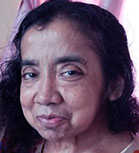
Wow, it’s like dream comes true. I can’t even think that I will be able to go washroom independently in past. But now I can walk and go everywhere I want. A great work by full Rehabana team, specially care and therapy team for give me that confident and support in which I can restart my journey.
Patient
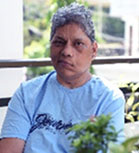
From the ambience to the treatment me always get a positive vibe from here. Very advanced infrastructure and got a very humanistic behavior. Thanks to expert rehab physician, caring therapists, rehab nurses and happiness manager. A vibrant place, energetic individuals that impart energy to regain hope.
Patient
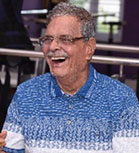
I was detected Vascular Parkinsonism in 2019.I already had arthritis on right knee and develop some mobility issues. Then I met DR AMBAR KONAR and there I like the very congenial atmosphere of REHABANA. It provides a very dedicated service. Therapists are sincere cheerful and knows that task very well. Now I got back my independent movement.
Patient
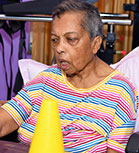
Rehab goals are explained and mostly achieved. Received all the required clarifications from DOCTORS. Additional support given to set up at home is excellent.
Patient

REHABANA create a new story in my life after bike accident. Without Dr. and his team guidance I never get back my ambulated life. This is best rehab center for TRAUMATIC BRAIN INJURY.
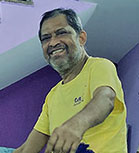
My experience with Rehabana is very good. My life was going to dependent on wheelchair for lifetime after spinal cord injury,I was unable to walk . Thanks to Dr KAUSTAV BASUTHAKUR and his team.Noe I am fully cured and leading a normal healthy life.
Patient
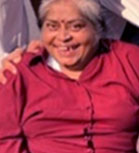
After 2 years of Stroke, my right side was totally paralyzed. Heavy weight was obstructed to bring back my life normal pathway. Hardworking, motivation of whole team making possible to move anywhere with assistive device.
Patient